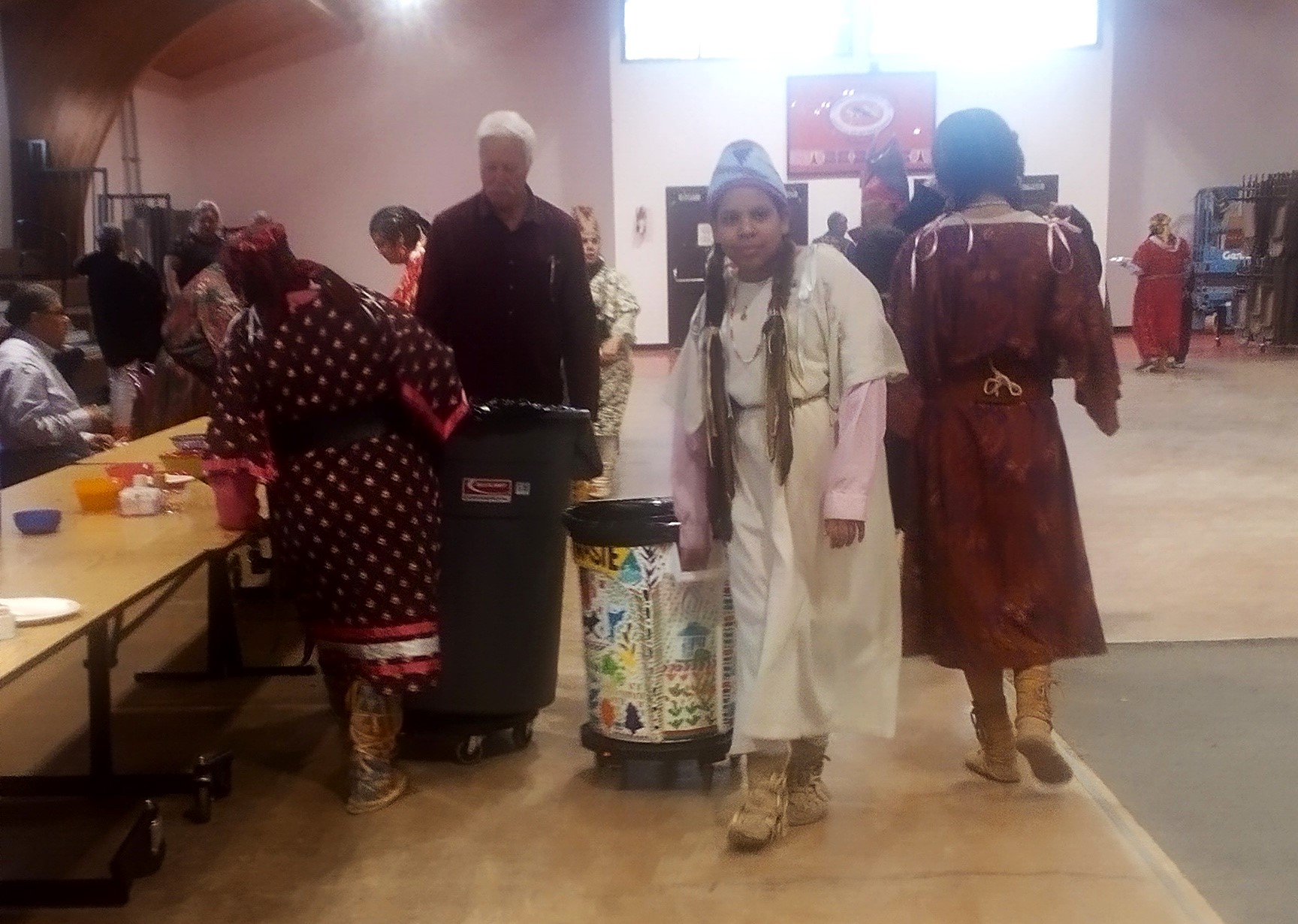
Lisa Gavin helps gather food waste from the Nixyaawii 2025 Celery Feast
Food Waste Assessment
Understanding CTUIR’s baseline of food waste is essential for developing a framework for tracking and improving materials management in the community. To date, CTUIR has not conducted any attempt to quantify types and volumes of waste currently generated, except for what is required for services provided by CTUIR’s Tribal Environmental Recovery Facility (TERF). Our project focuses on a small concentration of our Tribal community in order to create a baseline understanding of waste management and food waste contributions specifically.
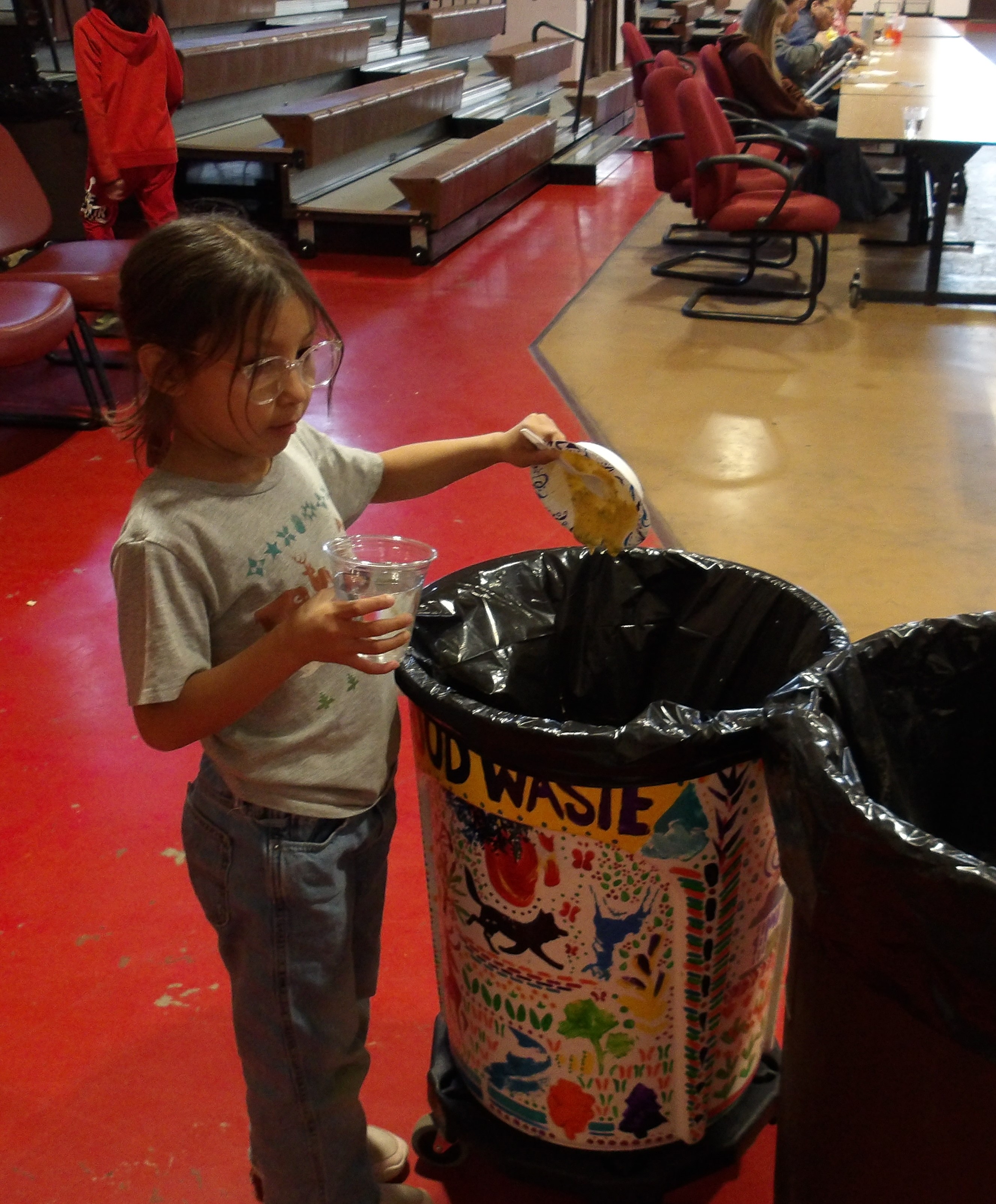
Site Waste Audits and Trainings
Within the Nixyaawii Community core, there are a number of sites that are participating with our project to gain an understanding of current food waste values and collect food waste for the biodigester demonstration. Many locations are a mix of public and community locations, and include the Nixyaawii Longhouse, the Nicht-Yow-Way Seniors Center, Mission Market Corner Store, Family Engagement Building, and other Tribal services that are located in the Nixyaawii (Mission) area. We are also working with CTUIR Housing to identify and coordinate with Tribal families of the Mission residential area who are interested in participating.
Host Site: Nicht-Yow-Way Seniors Center
We are excited to be working with our amazing partners at the Nicht-Yow-Way Seniors Center and their Yellowhawk Tribal Health Center staff on collecting food waste from direct services to our Elders. Thank you for hosting us with our March 2025 initial food waste audit and for contributing food waste to the Áq̓paš!
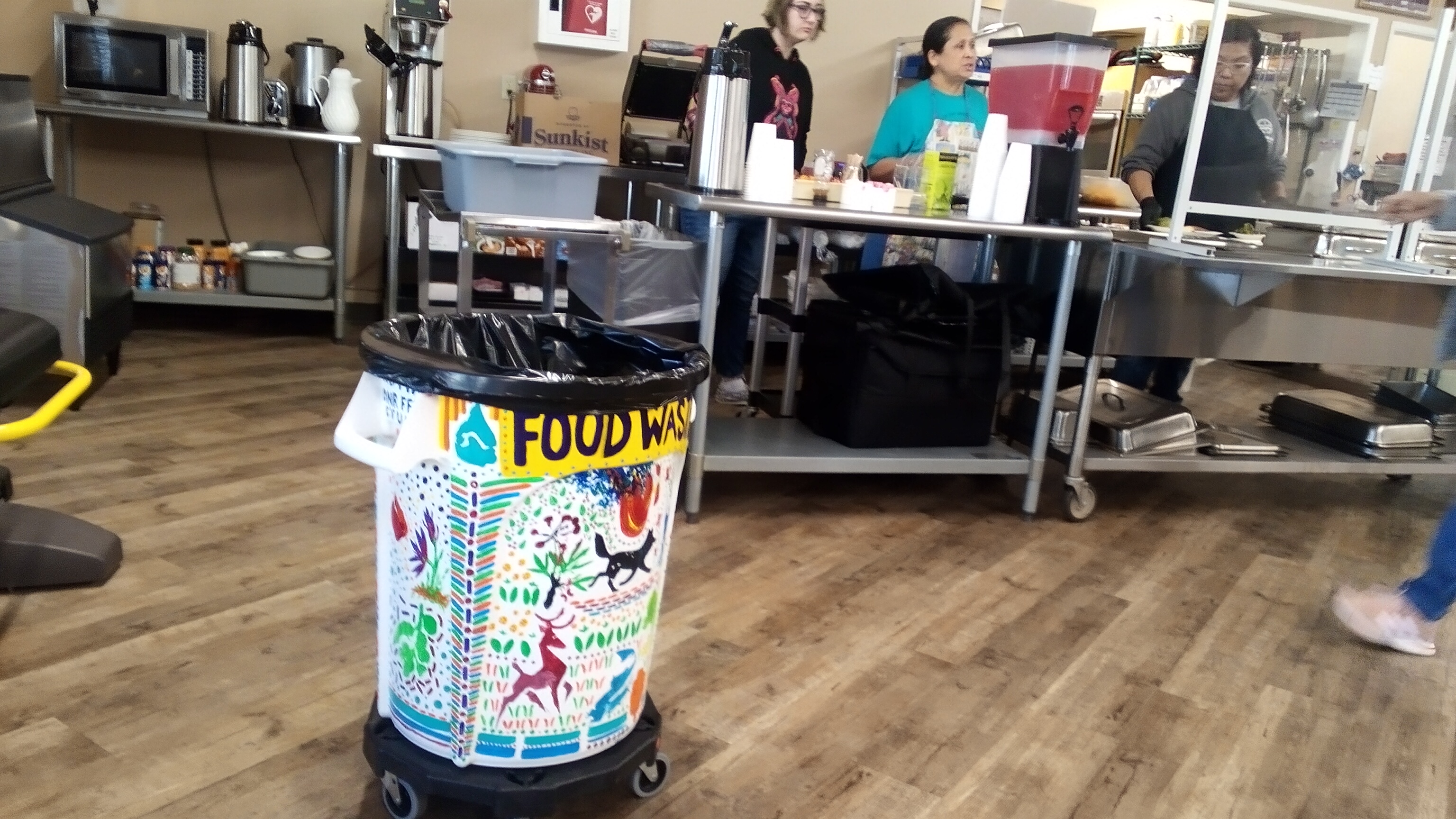
Host Site: Nixyaawii (Mission) Longhouse
Our project is really centered around the Nixyaawii (Mission) Longhouse and the ceremonial and community events that happen there. We worked with our Longhouse cooks to develop this food waste capture flow chart, in order to build capacity for our cooks to assist us in food waste diversion and data collection. Thank you to all the Cooks, Gatherers, Hunters, and Fishers who have helped us make this change in our community!
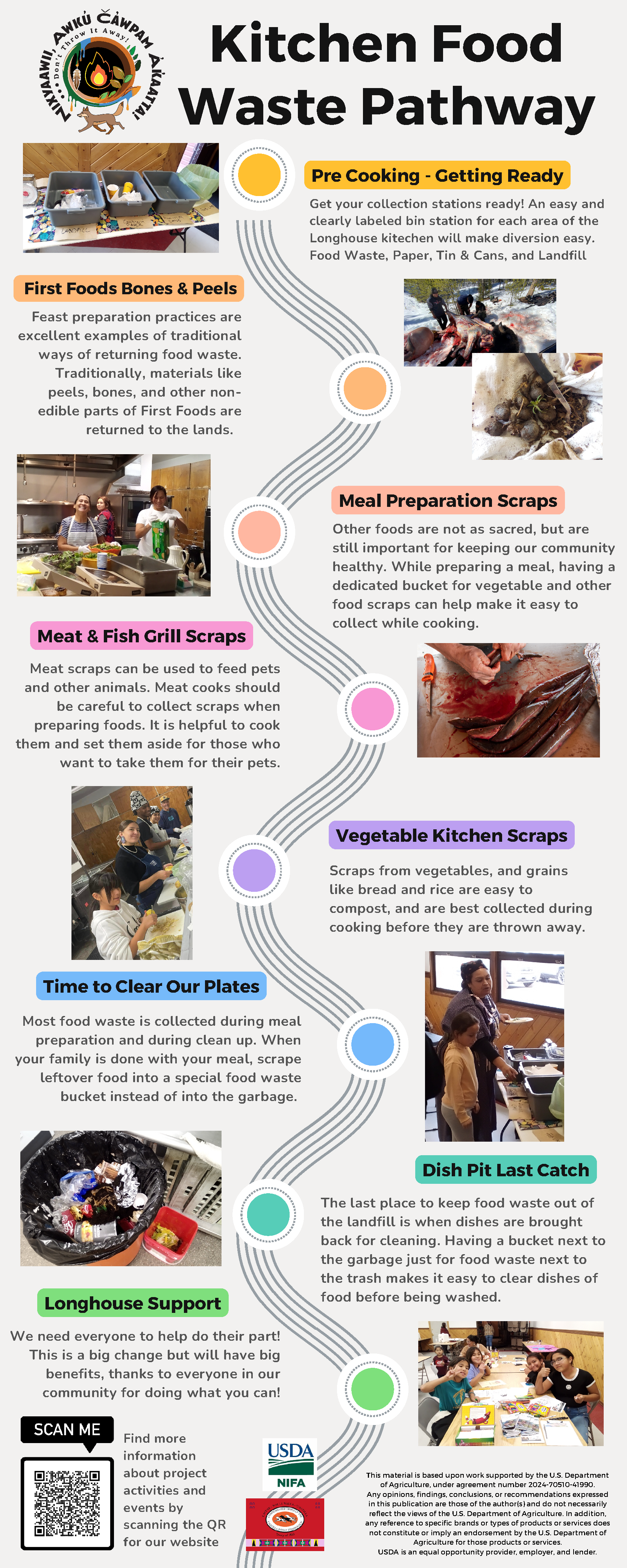
Help us keep our food waste out of landfills! There are many steps where food waste is created, and at this steps we can throw food scraps into a dedicated bin for use in composting and anaerobic digestion
Community Survey
The second component to Nixyaawii’s Food Waste Assessment is a community survey that asks families to evaluate their own food waste habits. These surveys exist both as one-off questions designed for specific occasions like Feasts, and traditional survey approaches. These survey answers will be compiled and provided in the Food Waste Assessment.
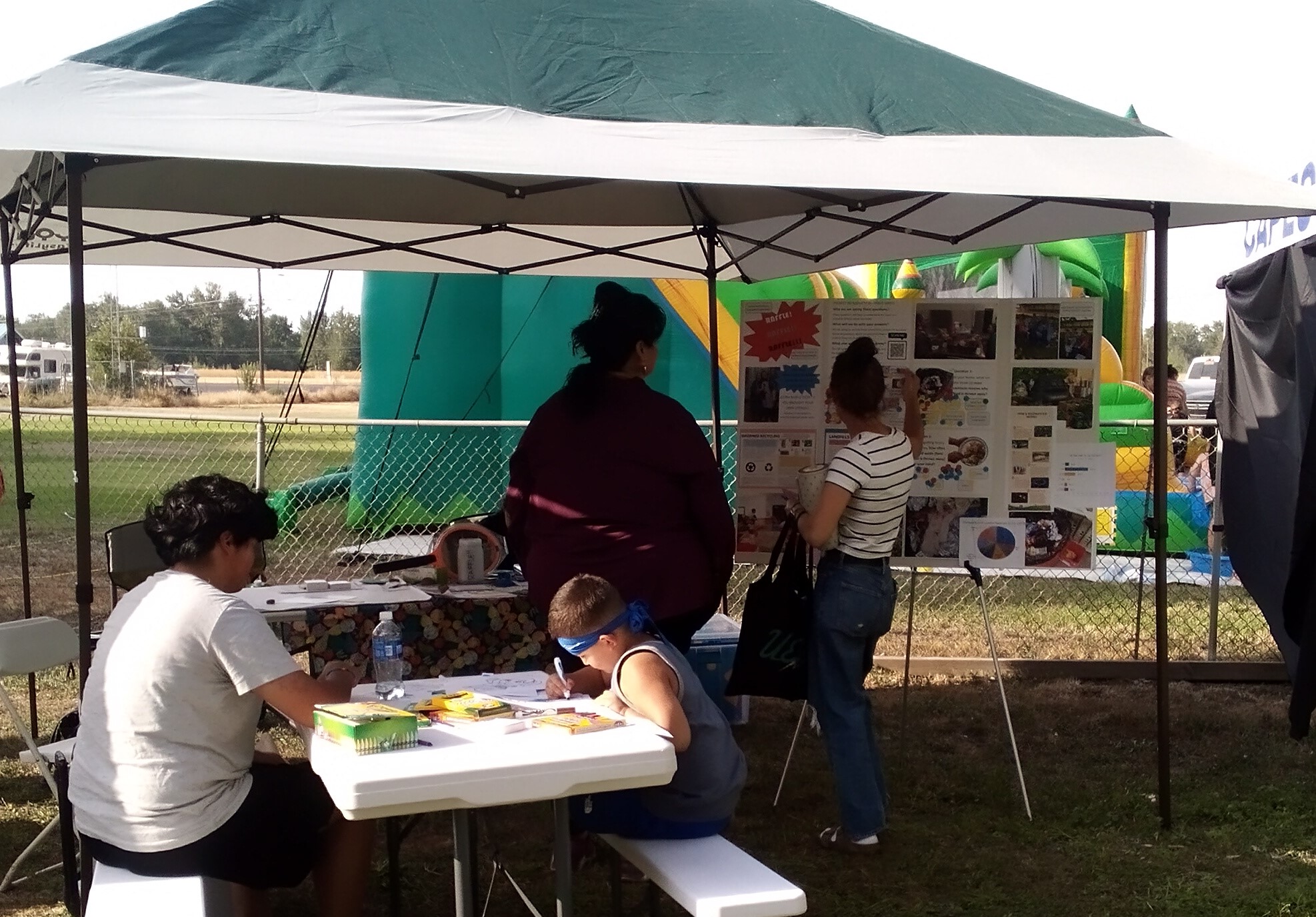
A Community Picnic attendee chats with DeArcie about the food waste survey and other project elements at the project’s event booth. Youth activities are a standard offering as part of project engagement, and recycling and composting themed activity pages are typically present.
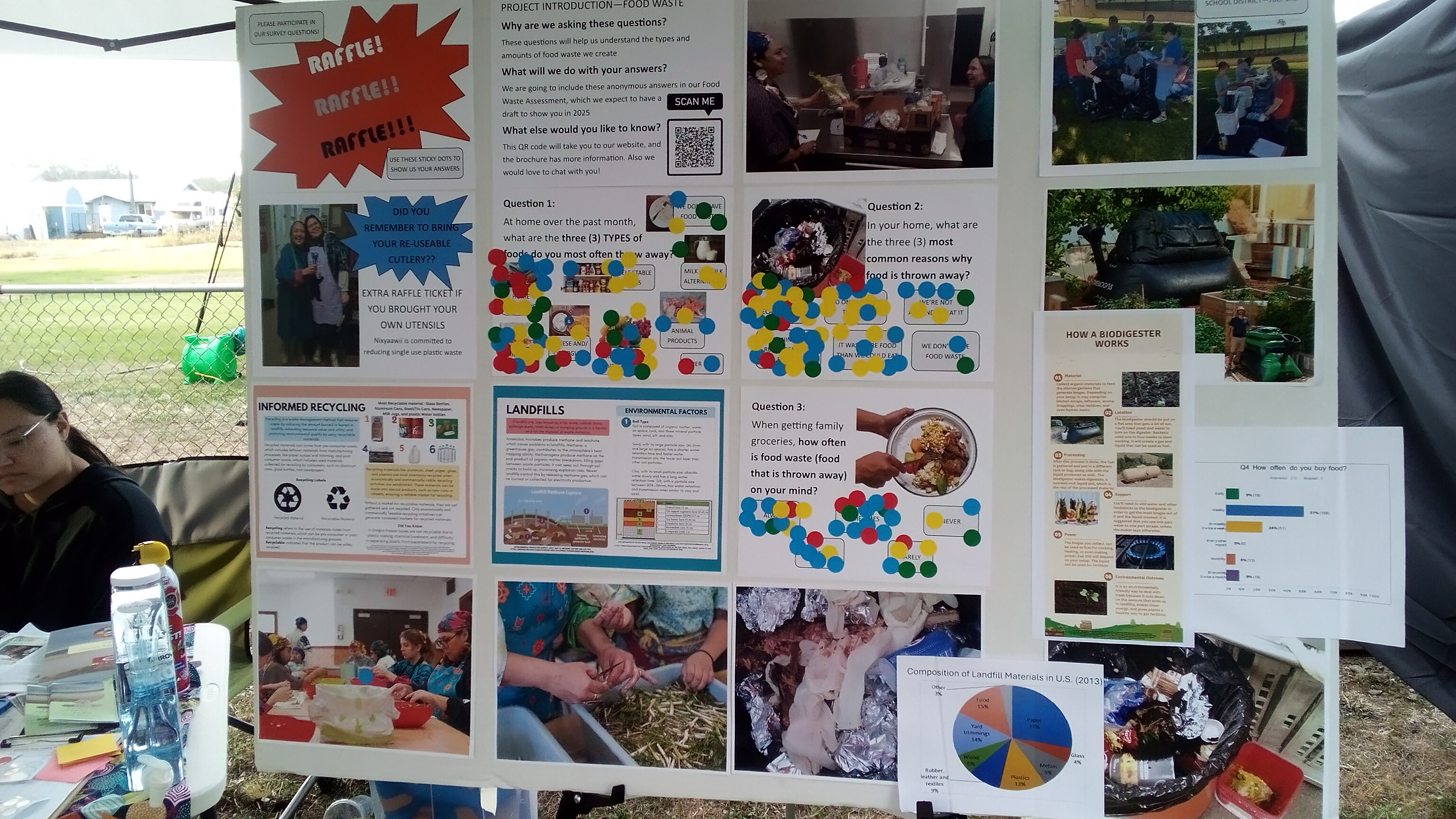
Sticky dot surveys are great for engaging the Tribal community at specific events, and provide preliminary data to a formal food waste survey. Participants were asked to indicate their answers using the sticky dots, and for this specific activity, the color dots don’t have any different significance.
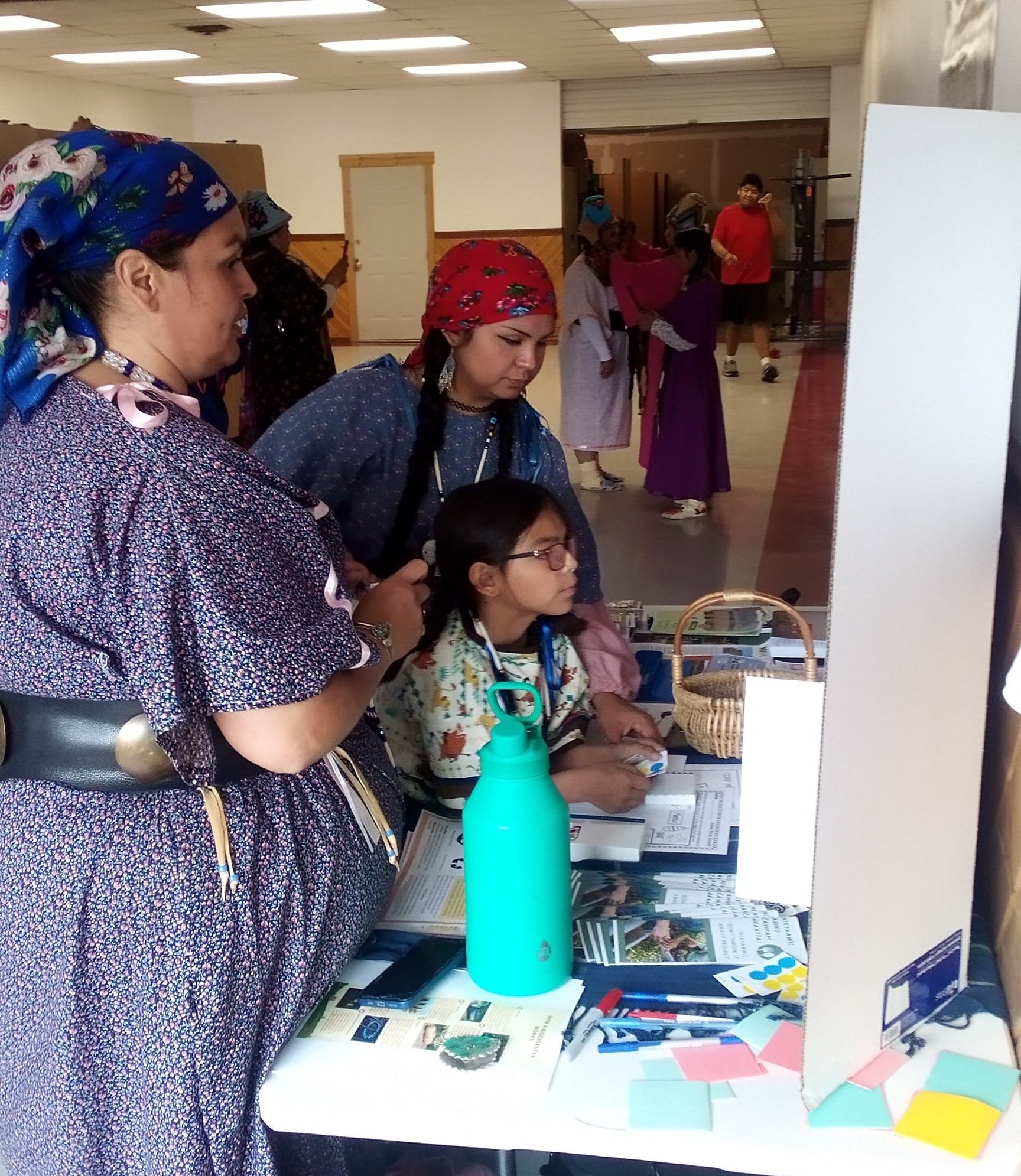
DeArcie with Biowaste Technology helps Huckleberry Feast participants understand and answer food waste survey questions in a sticky dot survey.
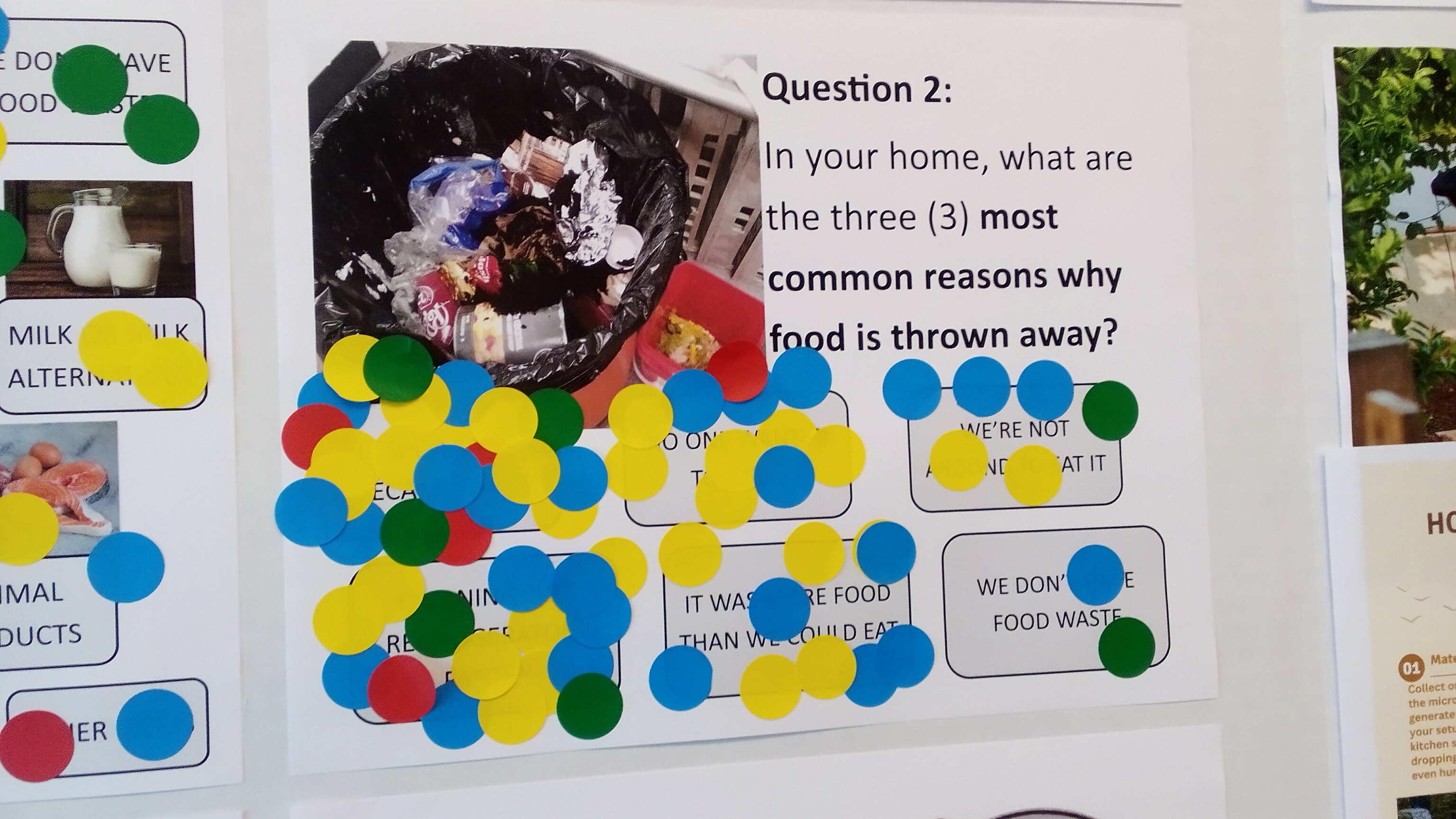
Sticky dots are layered on top of graphics indicating different answers to the survey question, “In your home, what are the three most common reasons why food is thrown away?” Answer options included: Spoiled or went stale; No one wanted to eat it; cleaning out the fridge; more food than we could eat; not at home to eat it; and we don’t have food waste. Most people indicated food was thrown away in their homes because it spoiled or went stale, or they were cleaning out the refrigerator/pantry.
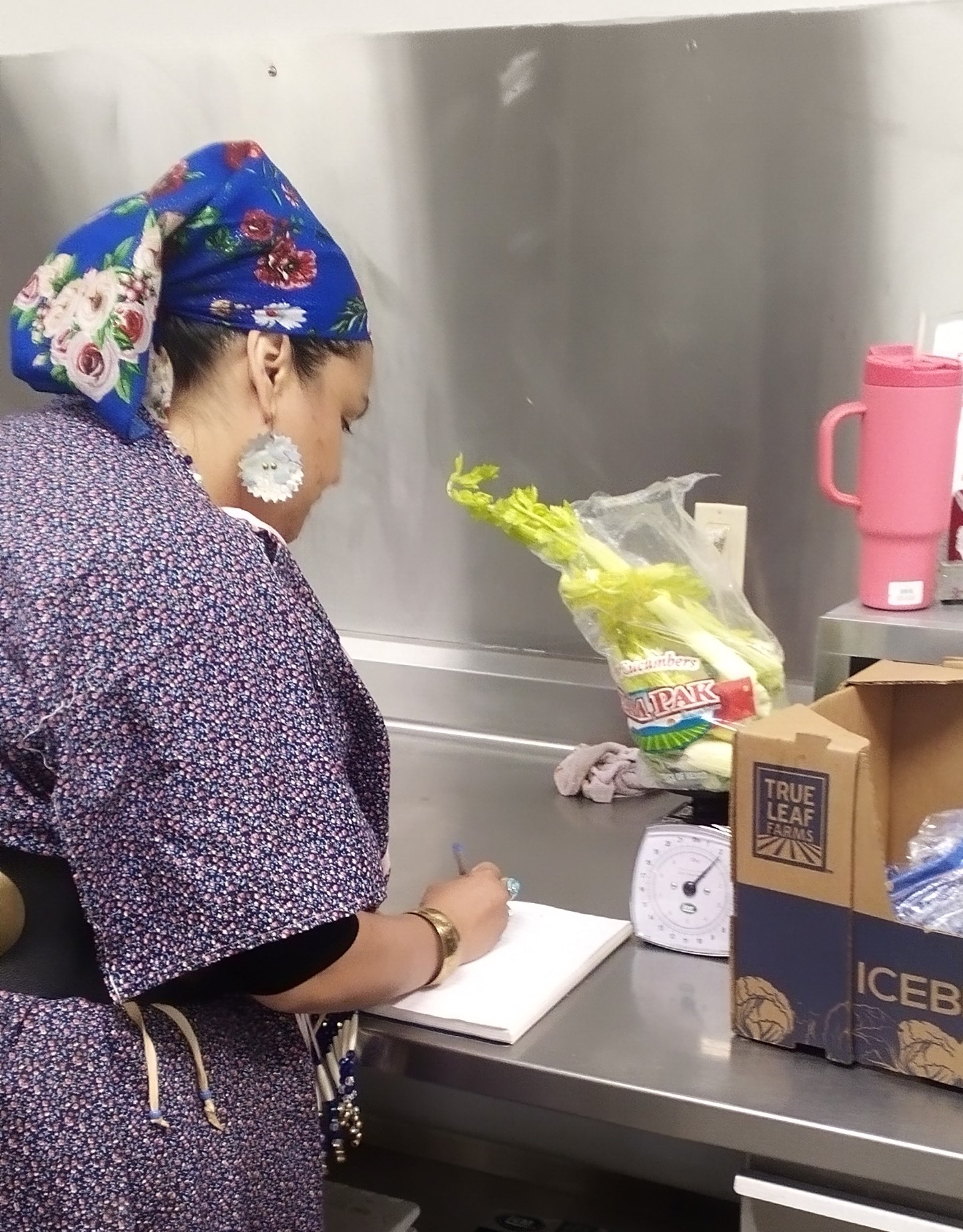
DeArcie Abraham with Biowaste Technology weighs food waste from Root Feast

Food waste collection was conducted during the 2024 Root Feast in April as observation and preliminary data for our food waste audits in the future.
This material is based upon work supported by the U.S. Department of Agriculture, under agreement number 2024-70510-41990.
Any opinions, findings, conclusions, or recommendations expressed in this publication are those of the author(s) and do not necessarily reflect the views of the U.S. Department of Agriculture. In addition, any reference to specific brands or types of products or services does not constitute or imply an endorsement by the U.S. Department of Agriculture for those products or services.
USDA is an equal opportunity provider, employer, and lender.
Webpage updated: April 8th 2025

